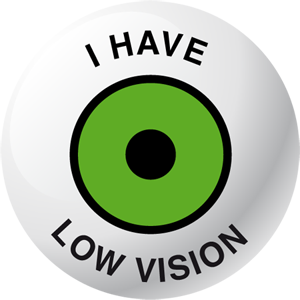What is low Vision?
Low vision is the visual condition of a person with a significant reduction in sight, which cannot be improved by eyeglass correction, contact lenses, or pharmaceutical or surgical treatment. As a result, they experience considerable difficulty or even inability to carry out certain daily life activities.
There are many causes of low vision, and the majority of those are eye diseases or pathologies (Macular Degeneration, Glaucoma, Diabetic Retinopathy, Retinitis Pigmentosa, High-degree Myopia…), but it can also be caused by accidents, neurological problems, congenital malformation, infectious disease etc.
That’s the reason why not everyone suffering from low vision sees the same. There are many symptoms which can be just one or a group to produce low vision (blurred vision, patchy vision, white-out, night blindness, tunnel vision, loss of contrast, colour blindness…).
A person is considered to have low vision when (after optical correction), their visual acuity is less than 0.3 in the stronger eye, or they have a visual field of less than 20 degrees.
What does it mean to be “Legally Blind”?
For someone who is not familiar with visual impairment, “blindness” usually means a total loss of vision. However, in Spain, a visual acuity equal to or under 10% and/or a visual field equal to or less than 10 degrees in its stronger eye makes an individual “legally blind”. This means that many legally blind people retain some residual vision, but with great limitations which vary from case to case.
What’s the difference between complete blindness and legal blindness?
A person is considered “completely blind” when they have a total loss of sight, or they are only capable of perceiving light and shadow.
A person is considered “legally blind” when their visual acuity (with glasses or contact lenses, if required, is 10 times lower than normal sight in their stronger eye, or when their visual field (irrespective of acuity) is less than or equal to 10 degrees.

